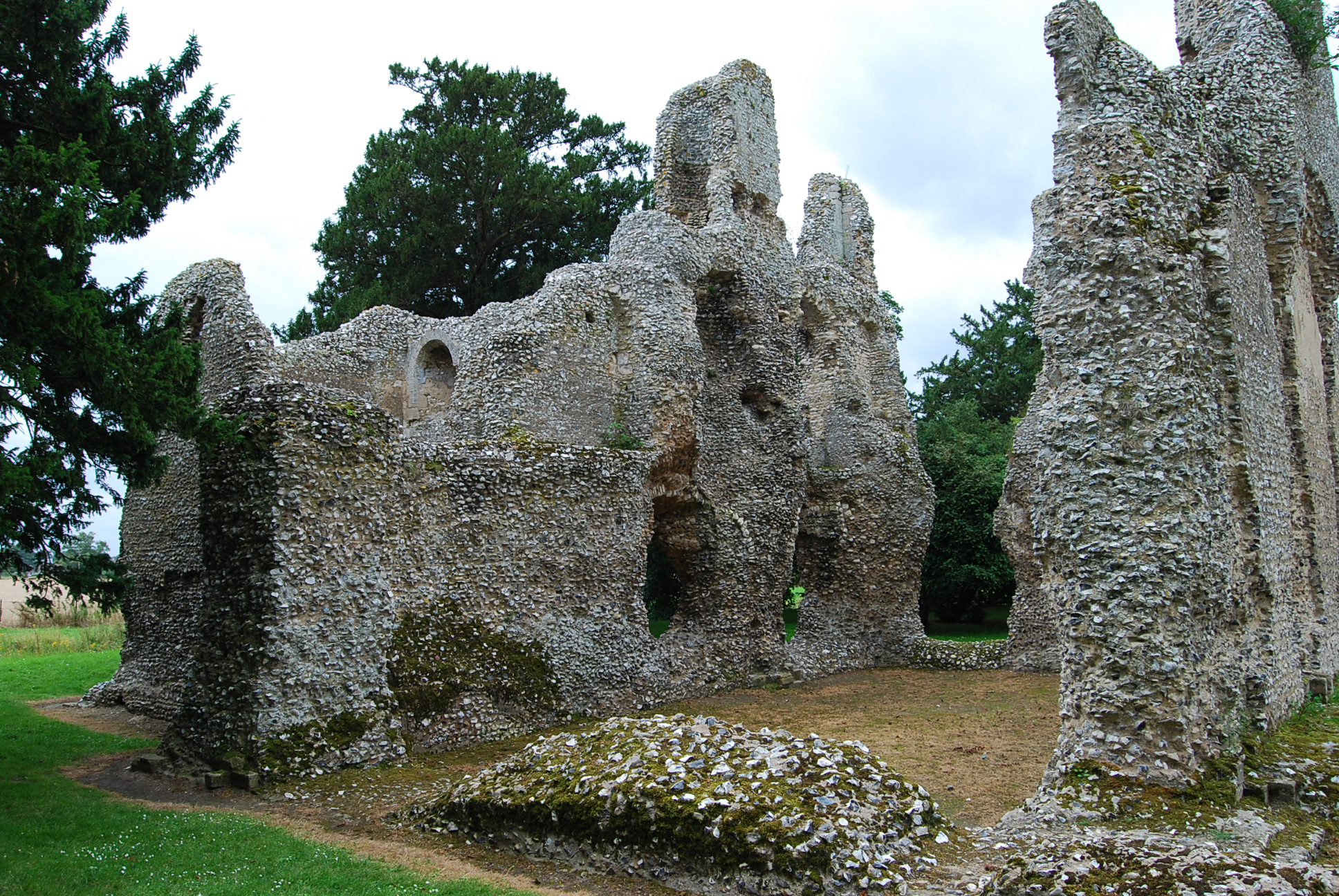Ghosts of Weeting Castle
The tiny ruin of Weeting Castle resides in the Norfolk countryside. It was built as a manor or great house in the late 12th century by Hugh de Plais, a tenant of the Earl of Surrey, who called nearby Castle Acre home.

The castle passed to the Howard Family in the 14th century, who abandoned it around 1390 when their family rose to prominence, gaining the title of Duke of Norfolk. Weeting Castle lived in relative peace with no history of conflict or sieges, but its tranquil setting is sometimes interrupted by spirits from another time.
Visitors to the castle have reported various phenomena, including a strange mist and disembodied voices. A couple also claimed to have encountered the infamous Black Shuck while walking around the castle's moat. The Black Shuck has been stalking the Norfolk countryside since the 16th century and appears as a black dog, as large as a calf and noiseless as death, who is said to curse anyone who sees him.
W. A. Dutt described the Black Shuck in his 1901 Highways & Byways in East Anglia as such:
He takes the form of a huge black dog and prowls along dark lanes and lonesome field footpaths, where, although his howling makes the hearer's blood run cold, his footfalls make no sound. You may know him at once, should you see him, by his fiery eye; he has but one, and that, like the Cyclops', is in the middle of his head. But such an encounter might bring you the worst of luck: it is even said that to meet him is to be warned that your death will occur before the end of the year. So you will do well to shut your eyes if you hear him howling; shut them even if you are uncertain whether it is the dog fiend or the voice of the wind you hear. Should you never set eyes on our Norfolk Snarleyow, you may perhaps doubt his existence and, like other learned folks, tell us that his story is nothing but the old Scandinavian myth of the black hound of Odin, brought to us by the Vikings who long ago settled down on the Norfolk coast.
